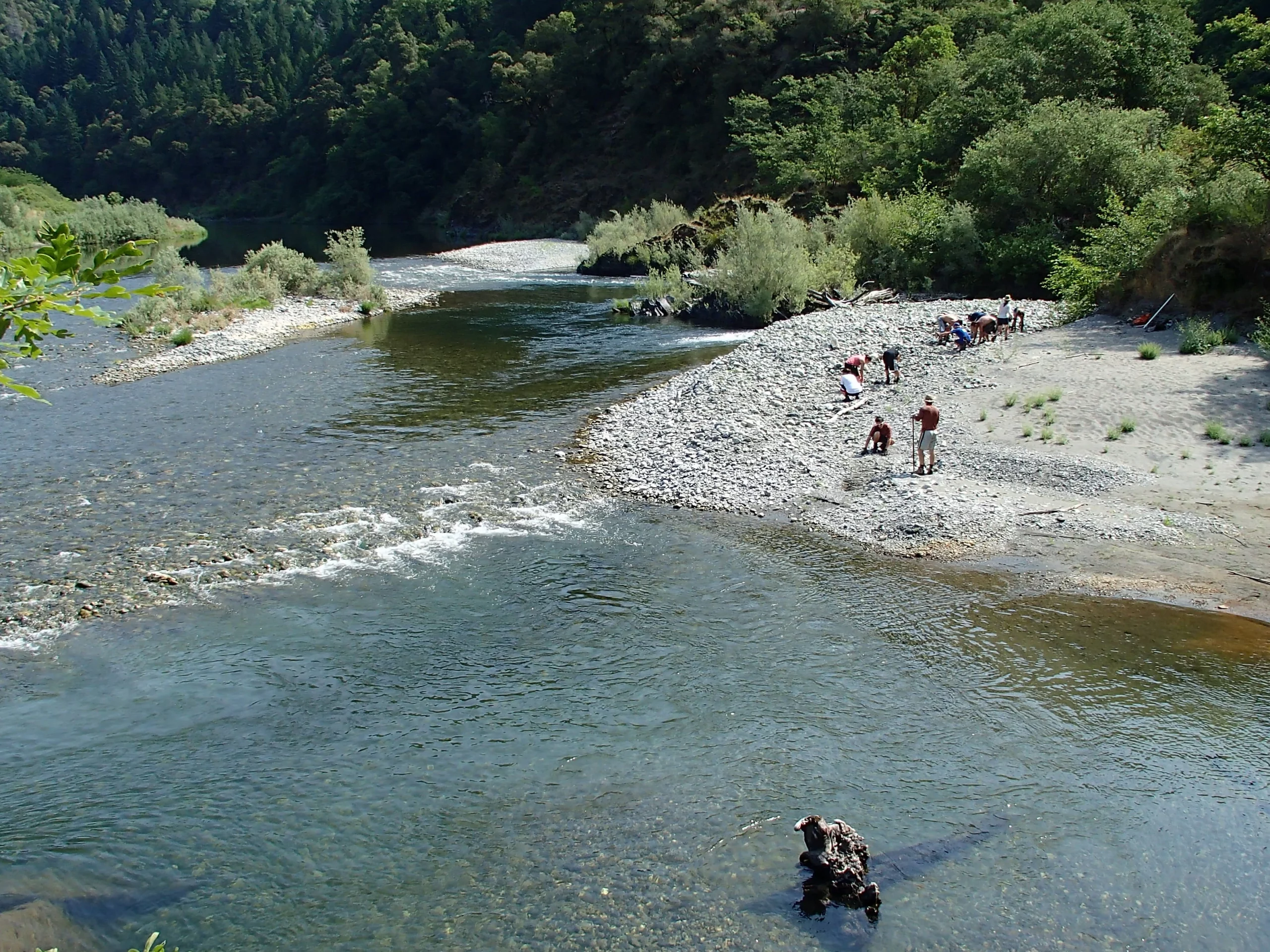Mid Klamath Fish Passage Improvement Project
Location of project:
Weitchepec, CA (41.1856, -123.708611) to Cottonwood Creek (41.8881666667, -122.5438750000)
Forum Funding Received: $38,680
Description of Project, including deliverables:
Since 2001, the Mid Klamath Watershed Council (MKWC), Karuk Tribal Fisheries Program (KTFP), the Salmon River Restoration Council (SRRC), and the US Forest Service (Orleans Ranger District, Happy Camp/Oak Knoll Ranger District) have been working together to identify and manually treat barriers to anadromous fish passage on key tributaries in the Mid Klamath Subbasin. To date, they have maintained an ongoing effort to improve adult and juvenile anadromous fish passage at the mouths of tributaries to the Mid Klamath, Salmon and Lower Scott Rivers. MKWC, KTFP, SRRC and USFS biologists have identified streams throughout the subbasin that chronically have fish passage problems at or near their confluence with the mainstem Klamath, Salmon and Lower Scott Rivers. The Mid Klamath Subbasin Fisheries Resource Recovery Plan calls for the identification and implementation of improved fish passage, as well as the assessment and evaluation of longterm restoration projects. Assessments will be completed on all identified tributaries prior to implementation. Assessments of these streams will include: identification of low flow barriers, potential long-term solutions to historic problems, presence/absence surveys, and assessments of qualitative features. Low flow barriers to these anadromous streams and temporary dams built for fire suppression and or recreational purposes (swimmers dams) will be manually reconstructed to allow for adult and juvenile fish passage, where feasible. MKWC and partners began this project in 2001 and have expanded from working on only a handful of creek mouths, to surveying up to 72 creeks in the Mid Klamath for fish passage barriers.
This project was designed to ensure both juvenile and adult fish passage into high quality thermal refugia areas during critical periods of migration. Access to cold, clean tributaries of the mainstem Klamath, Salmon and Scott Rivers during low flow, high temperature summer and fall months is critical for both migration and rearing within the Klamath River system. Re-connecting tributaries to mainstem river corridors provides for significant remediation of all limiting factors affecting salmonids in the Klamath River Basin, including: water quality, water quantity, and habitat quantity and quality. Cold water tributaries provide critical thermal refugia and rearing habitat during the juvenile and adult life stages of salmonids. These tributaries will be monitored for juvenile and adult fish passage throughout the season to monitor effectiveness of the project.
This past year, crews identified 25 barriers to fish passage and manually modified 24 of these barriers to allow fish passage opening about 4.5 miles of stream habitat to out migrating juvenile salmonids seeking cold water refugia.
The name(s) of the recovery plans and the specific task that name this barrier as a high priority:The barriers that this proposal seeks to address are seasonal anthropogenic barriers. Depending on the hydrologic outlook for the year, each tributary addressed in this project will have varying needs throughout the season such as: High velocity barriers, low velocity, swimmers dams, perched alluvial deltas, fragmented connection, or combinations of these.
The California Fish Passage Forum has nine overall objectives. This projects helps to address:
- 1. Remediate barriers to effective fish migration.
- 2. Facilitate coordination and communication among agencies, agency staff, and other entities that may propose, review, or promulgate fish passage criteria within California.
- 3. Identify, assess and prioritize the removal of fish passage barriers.
- 7. Facilitate plans to monitor and evaluate fish passage restoration effectiveness to ensure accountability.
- 9. Implement education and outreach activities, targeting both the general public and fish passage practitioners.
The anadromous fish species that will benefit from this project:
- Coho salmon
- Chinook salmon
- Steelhead/rainbow trout
The miles of stream opened as a result of implementing this project: 7.
National Conservation Strategies will be addressed by this project:
- 1. Protect intact and healthy waters.
- 2. Restore hydrologic conditions for fish.
- 3. Reconnect fragmented fish habitats.
USFWS Climate Change Strategies that will be addressed by this project:
- 3.2 Promote habitat connectivity and integrity.
- 3.7 Reduce susceptibility to diseases, pathogens, and pests.
This project will look to ensure habitat connectivity, specifically at the mouths of cold water tributaries by manually modifying creek mouths to ensure passage from the mainstem Klamath into connecting cold water tributaries. Studies have shown that access to cold water refuge during times of the year when main stem Klamath conditions become stressful for juvenile and adult salmonids can help arrest the spread of disease and parasites that can be lethal to salmonids. This project directly addresses this need by enhancing creek mouths to ensure passage for salmonids into these critical habitats. MKWC technicians are trained in identifying symptoms of disease and report any findings to appropriate agencies.
Fishery: By increasing passage into high value rearing and refuge habitat, MKWC’s fish passage improvement project can directly benefit commercial, recreational and subsistence fishing by increasing the fitness of outmigrating juvenile and returning spawning adults.Studies have shown that access to these refuge habitats can increase survival and overall health of salmonid species when mainstem conditions become stressful or inhospitable to salmonid health.

